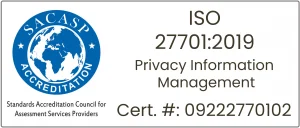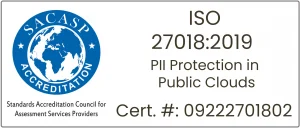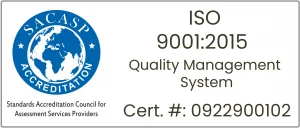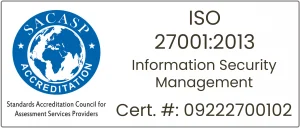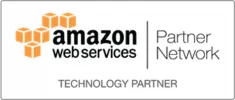In today’s fast-paced tech landscape, businesses face a crucial decision point. At the core of this lies AS400, a long-standing pillar of enterprise computing. But with technology evolving rapidly, how does AS400 stay relevant? At the core of this challenge lies AS400, a stalwart in enterprise computing with a legacy spanning decades. Despite the emergence of newer technologies, AS400 remains a cornerstone for many industries, offering adaptability, scalability, and robust security features.
In this blog, let us explore the journey into AS400 Modernisation, navigating a deep dive into its past, present, and future. As we explore AS400 Application Modernisation, revealing its challenges, opportunities, and how it can transform businesses, it will become evident that embracing this evolution is not just advantageous but imperative for staying competitive and future-ready in today’s digital landscape.
An Introduction to Application Modernisation
Application modernisation is the strategic process of revitalising legacy software applications to meet contemporary business demands and technological standards. It involves updating or transforming outdated systems to align with current requirements, advancements, and user expectations. It is a strategic imperative for organisations looking to future-proof their IT infrastructure and maximise the value of their software investments.
AS400 modernisation approaches encompass various strategies to update and optimise legacy systems, ensuring alignment with modern business requirements and technological advancements. AS400 green screen modernisation involves transforming traditional text-based interfaces into intuitive graphical user interfaces (GUIs), enhancing user experience and productivity. AS400 GUI modernisation focuses on redesigning user interfaces with graphical elements, intuitive navigation, and modern design principles to improve usability and accessibility. This multifaceted approach encompasses various aspects, including upgrading underlying architectures, enhancing functionalities, and improving user interfaces to adhere to modern standards.
One of the primary objectives of application modernisation is to breathe new life into legacy applications that may be struggling to keep pace with the evolving digital landscape. By modernising these systems, organisations can leverage the latest technologies and methodologies to enhance efficiency, productivity, and user experience. This modernisation often involves transitioning from traditional monolithic architectures to more agile and scalable frameworks, such as microservices or cloud-native architectures.
Modernised applications are better equipped to adapt to changing business requirements and market dynamics, enabling organisations to stay competitive in today’s fast-paced digital economy.
Reasons to Modernize Legacy AS400 Systems
From enhancing scalability to enabling seamless integration, the transformative power of modernisation offers a plethora of benefits.
Enhanced Functionality
As modernisation is equipped with the integration of new functionalities, such as real-time analytics, mobile access, and cloud connectivity, it empowers organisations to remain competitive in today’s digital landscape.
Improved Scalability
With the redesigning of the architecture, it is made more flexible and scalable, which helps enable seamless expansion to meet future business needs without compromising performance or stability.
Compliance Requirements
Modernisation ensures that systems are updated to comply with industry regulations and data protection laws, helps reduce the risk of non-compliance and associated penalties.
Support for New Business Models
Organisations can implement flexible and scalable architectures through modernisation, allowing them to support innovative business models that drive revenue growth and market expansion.
Integration with Third-Party Systems
Integration with Third-Party Systems: By integrating AS400 systems with external APIs, web services, and cloud platforms, organisations facilitate seamless communication and data sharing across the entire ecosystem, enabling efficient collaboration and maximising the value of their IT investments.
Agility and Time-to-Market
With modernisation, organisations can adopt agile development methodologies, DevOps practices, and continuous delivery pipelines, accelerating innovation and reducing time-to-market for software releases.
Support for Remote Work
Equipped with remote work solutions, such as virtual desktop infrastructure (VDI), collaboration platforms, and secure VPNs, it enables employees to access AS400 applications and data from any location.
Business Continuity and Disaster Recovery
Implementing robust backup, replication, and failover solutions ensures high availability and data resilience for critical business operations. This prevents organisations from being at risk of data loss and downtime in the event of a system failure or natural disaster, safeguarding their operations and reputation.
Benefits of Modernisation
With the myriad advantages awaiting the business through AS400 application modernisation, revolutionising operations, and propelling growth in the digital age, organisations can expect to enhance productivity, elevate user satisfaction, and fortify their competitive edge in today’s dynamic market landscape.
Improved Productivity and Streamlined Processes
Equipped with benefits like streamlining workflows, automating tasks, and eliminating redundant processes, it leads to increased efficiency and productivity across the organisation.
Enhanced User Experience and Satisfaction
By revamping user interfaces, incorporating intuitive design principles, and optimising functionality, AS400 modernisation enhances user satisfaction, reduces training time, and improves overall user engagement.
Increased Scalability to Accommodate Business Growth
With enhanced scalability, businesses can seamlessly adapt to changing workloads, effortlessly accommodate expansion, and meet evolving customer demands without compromising performance.
Cost Efficiency Through Reduced Maintenance Expenses
Upgrading legacy systems to modern architectures reduces maintenance costs associated with outdated hardware, software, and manual processes, driving long-term cost savings and improving the bottom line.
Robust Security Measures to Safeguard Sensitive Data
Modernisation reinforces security measures, including encryption, access controls, and threat detection, ensuring the integrity and confidentiality of critical business data in compliance with regulatory requirements.
Compatibility with Modern Technologies and Platforms
Through modernisation, AS400 applications seamlessly integrate with contemporary technologies, cloud platforms, and third-party services, empowering organisations to harness the latest tools, frameworks, and innovations to propel business success.
Futureproofing for Ongoing Relevance and Adaptability
By embracing AS400 modernisation, businesses future-proof their systems, ensuring they remain agile, adaptable, and competitive in the ever-evolving digital landscape, poised for continued growth and success.
Challenges With AS400 Application Modernisation
Navigating the path to AS400 application modernization presents several challenges, from legacy code complexity to resource constraints, requiring strategic planning and execution to overcome hurdles and achieve successful outcomes.
Here are some of the challenges outlined:
Legacy Code Complexity
AS400 systems often have intricate and monolithic codebases, posing challenges in refactoring and modernising legacy applications without disrupting core functionalities.
Data Migration Hurdles
Migrating data from AS400 to modern platforms requires meticulous planning and execution to ensure seamless transition and data integrity, which can be daunting due to the volume and complexity of data involved.
Resource Constraints
Modernisation projects demand substantial time, expertise, and resources, which can strain organisational capabilities, particularly in smaller businesses with limited IT resources.
Business Disruption Risk
Transitioning from legacy AS400 systems to modernised solutions may entail temporary disruptions in operations if not managed effectively, potentially impacting productivity and customer service levels.
Lack of Skilled Resources
Finding professionals with the right expertise, tools, and technologies, as well as legacy programming languages like RPG and COBOL, can be challenging, leading to delays and increased project costs.
Legacy System Dependencies
Several legacy applications often have dependencies on outdated hardware, software, and proprietary technologies, making it difficult to integrate with modern systems and platforms, thereby limiting interoperability and hindering modernisation efforts.
Compliance and Regulatory Requirements
Ensuring compliance with industry regulations and data privacy laws during the modernization process can be complex and time-consuming, requiring careful consideration and implementation of security measures and data protection protocols.
Approaching AS400 Application Modernisation
When embarking on AS400 application modernization, organisations can adopt a systematic approach to navigate the complexities and ensure successful outcomes. By adopting a structured approach to AS400 application modernization, organisations can effectively address challenges, mitigate risks, and unlock the full potential of their IT infrastructure to drive business growth and innovation.
The several steps involved in the implementation are:
Comprehensive Assessment
Conducting a thorough assessment of existing AS400 systems to identify areas for modernisation, assess dependencies, and prioritize objectives based on business needs.
Strategic Planning
Developing a clear and comprehensive modernization strategy that outlines goals, timelines, resource requirements, and risk mitigation plans, ensuring alignment with organisational objectives and stakeholder expectations.
Collaboration and Communication
Fostering collaboration and communication between IT teams, business stakeholders, and external partners throughout the modernization process to ensure alignment, gather feedback, and address concerns effectively.
Incremental Implementation
Breaking down the modernization process into manageable phases and implementing changes incrementally to minimise disruption, mitigate risks, and ensure continuity of operations.
Rigorous Testing and Validation
Conducting rigorous testing and validation of modernized systems to ensure stability, functionality, and security before deployment, thereby reducing the risk of errors and ensuring a smooth transition.
AS400 Modernization Tools
Code Refactoring Tools
They help streamline the process of restructuring and optimizing existing AS400 codebases to improve readability, maintainability, and performance. These tools offer automated code analysis, refactoring suggestions, and code transformation capabilities tailored for AS400 programming languages like RPG and COBOL. By automating code refactoring tasks, these tools enable developers to eliminate redundant code, improve code quality, and reduce technical debt, leading to more efficient and maintainable AS400 applications.
AS400 Mobile App Development Frameworks
They streamline the creation of mobile applications that seamlessly integrate with AS400 systems. These frameworks offer tools for code analysis, optimization, and secure data access, ensuring high performance and data integrity. With support for cross-platform compatibility and integration with Mobile DevOps processes, developers can efficiently build, test, and deploy mobile apps across multiple platforms. By leveraging these frameworks, organisations can deliver feature-rich and secure mobile applications that enhance user productivity and drive business growth.
Legacy System Integration Middleware
They facilitate the integration of legacy AS400 systems with modern applications, databases, and services by providing a bridge for seamless communication and data exchange. They offer connectors, adapters, and APIs that abstract the complexities of AS400 integration, allowing developers to access AS400 data and functionality from contemporary environments. By enabling legacy AS400 systems to interoperate with modern technologies, middleware solutions support hybrid IT architectures, data-driven decision-making, and digital transformation initiatives without disrupting existing business processes.
Automated Testing Tools
They automate the testing process for modernised AS400 applications, ensuring software quality, reliability, and compliance with business requirements. These tools provide test automation frameworks, test case generators, and regression testing suites designed specifically for AS400 development environments. By automating testing activities, these tools reduce manual effort, accelerate testing cycles, and detect defects early in the development lifecycle, improving overall software quality and reducing time-to-market for modernised AS400 applications.
Application Performance Monitoring (APM) Tools
They monitor the performance, availability, and health of modernised AS400 applications in real-time, enabling proactive identification and resolution of performance issues. These tools offer monitoring dashboards, performance metrics, and alerting mechanisms to track key performance indicators (KPIs) and ensure optimal application performance. By monitoring application performance, APM tools help maintain high levels of user satisfaction, minimise downtime, and maximise the efficiency of modernised AS400 systems, improving the overall user experience.
Compliance and Security Assessment Tools
They evaluate the compliance status and security posture of modernised AS400 applications, identifying vulnerabilities and ensuring adherence to industry regulations and standards. These tools perform security scans, vulnerability assessments, and compliance audits, generating reports and recommendations for remediation actions. By assessing compliance and security risks, these tools help mitigate security threats, protect sensitive data, and maintain regulatory compliance, safeguarding the integrity and reputation of modernised AS400 systems.
How ZetaRP can embrace AS400 Modernisation
At ZetaRP, we recognise the pivotal role that AS400 modernisation plays in shaping the future of enterprise computing. With our deep expertise in technology transformation and a commitment to driving organisational success, we stand uniquely positioned to guide ZetaRP through this journey of innovation and growth.
By leveraging our comprehensive suite of modernisation solutions, tailored to ZetaRP’s specific needs and objectives, we can revitalise legacy AS400 systems, unlocking new levels of agility, efficiency, and competitiveness. From legacy code refactoring to user interface redesign, cloud migration, and DevOps adoption, our holistic approach ensures that every aspect of ZetaRP’s IT ecosystem is optimised for success in today’s digital landscape.
The impact of AS400 modernisation extends far beyond technology alone. By modernising AS400 systems, ZetaRP can streamline operations, enhance collaboration, and empower employees with intuitive, user-friendly interfaces and tools. This transformation not only drives efficiency and productivity but also fosters a culture of innovation and adaptability, positioning ZetaRP for sustained growth and success in the ever-evolving business landscape.
Conclusion
AS400 modernisation is not merely a technological upgrade, but a strategic imperative for businesses to thrive in the digital age. Organisations can unlock a host of benefits, including increased agility, improved scalability, enhanced security, and reduced operational costs, along with staying competitive, meeting evolving customer demands, and future-proofing their IT infrastructure.
As businesses navigate the complexities of digital transformation, AS400 modernisation emerges as a beacon of opportunity, guiding them towards greater efficiency, innovation, and success. Embracing modernisation isn’t just about staying relevant, but seising the future and charting a course toward sustained growth and prosperity.
Contact ZetaRP today, as we are your one stop solution for all your AS400 modernisation solutions. Our team of experienced professionals is dedicated to guiding you through every step of the modernisation journey, from assessment and strategy development to implementation and beyond. With ZetaRP by your side, you can harness the full potential of AS400 modernisation to drive innovation, enhance efficiency, and propel your organisation towards a brighter future.
Do you feel overwhelmed by the complexity of managing AS400 based Core Banking and Financial Products?
Related Posts
Understanding the Role of AS400 DB2 – Basics and Beyond
In the evolving realm of database management, IBM AS400 DB2 stands as a stalwart, offering robust solutions tailored to diverse enterprise needs. Specifically, when operating on the AS/400 platform, DB2...
AS400 Migration to Cloud: Here’s What You Need to Know
Migrating legacy systems to the cloud is essential for modernising infrastructure and fostering innovation in today's digital landscape. The AS400, renowned for its reliability, plays a crucial role in...
Transforming Legacy AS400 iSeries Job Schedulers for the Modern Era
The efficient management of batch job processing is indispensable for maintaining operational efficiency and meeting customer demands, in this competitive scenario. Job schedulers, particularly those built...

